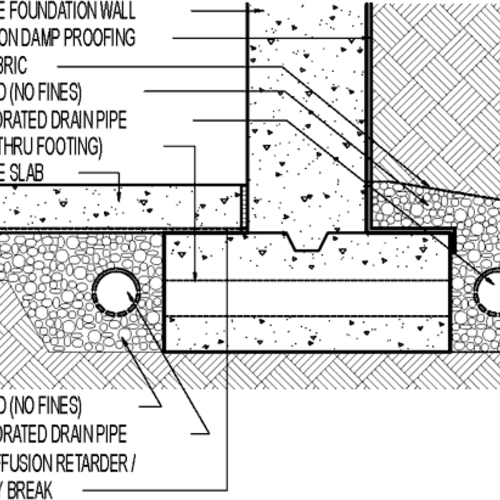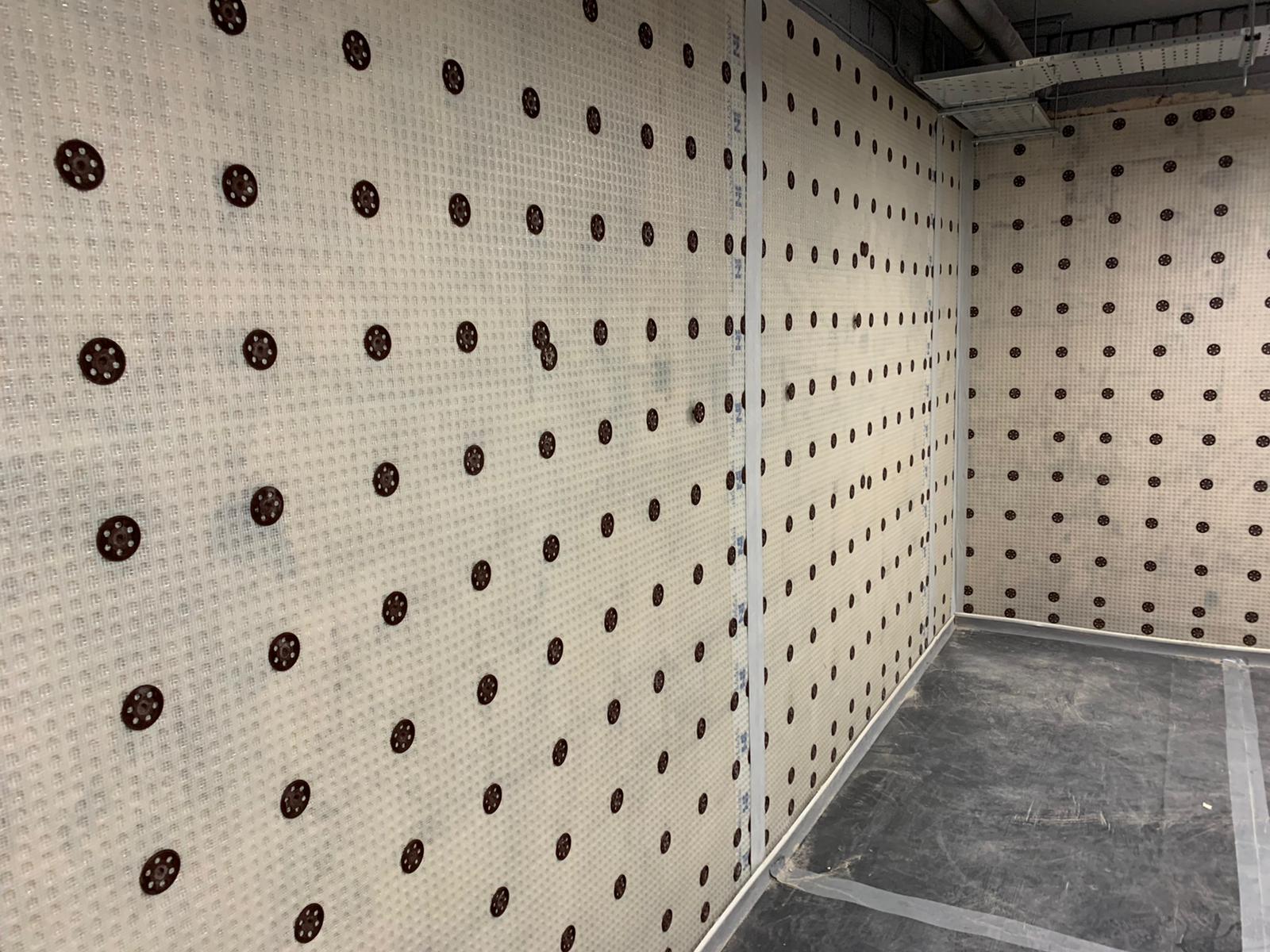Common signs you need damp proofing newcastle services now
Common signs you need damp proofing newcastle services now
Blog Article
Understanding the Significance of Damp Proofing in Preventing Structural Damage
Damp proofing functions as an essential defense against dampness seepage in structures. This protective measure can prevent substantial structural damage, yet several homeowner remain uninformed of its value. Recognizing the signs of dampness and understanding the various services available can be crucial. Neglecting wet proofing can lead to extreme consequences. What are the certain threats and options that homeowner should think about?
What Perspires Proofing and Just How Does It Work?
Moist proofing serves as an essential obstacle against wetness breach in buildings. damp removal newcastle. This process includes using particular products and methods to stop water from permeating walls, floors, and other structural aspects. Normally, moist proofing can be achieved with the installment of damp evidence membrane layers, layers, or the usage of specialized sealants.These approaches work by creating a safety layer that hinders moisture motion, making sure that the interior atmosphere stays healthy and balanced and completely dry. Moist proofing is especially crucial in locations susceptible to high humidity or groundwater, as it aids maintain the honesty of the framework over time.Moreover, efficient damp proofing contributes to energy performance by stopping warmth loss connected with wet environments. By attending to potential wetness problems prior to they intensify, damp proofing acts as a proactive procedure in safeguarding buildings from the harmful effects of water damage, ultimately extending their life-span and maintaining their worth
Common Indicators of Moisture in a Building
Dampness concerns within a structure can manifest with numerous obvious indications that show the existence of wetness. One popular indicator is the look of water stains on ceilings or wall surfaces, which commonly indicates moisture infiltration. In addition, peeling or bubbling paint can suggest that excess humidity is trapped below the surface, bring about damage. One more usual sign is the presence of mold and mildew, which grow in damp problems and can typically be identified by their stuffy smell. In addition, a surge in moisture degrees can create condensation on windows and various other surfaces, highlighting dampness issues. Unequal or deformed floor covering might signify underlying dampness that endangers architectural integrity. Identifying these indicators early can aid mitigate possible damage and maintain a risk-free living environment. Normal examinations and punctual activity are essential in dealing with wetness concerns prior to they intensify.
The Risks of Overlooking Damp Proofing
Disregarding moist proofing can bring about substantial dangers to a structure's architectural honesty, as wetness buildup may damage walls and foundations. Additionally, extended dampness produces a setting conducive to mold and mildew development, presenting significant wellness dangers to owners. Dealing with these risks is necessary for making sure both security and durability of the home.
Architectural Stability Risks
When house owners neglect the relevance of effective wet proofing, they reveal their buildings to substantial architectural integrity hazards. Long term moisture infiltration can result in the advancement of mold and mildew, which weakens foundational elements and can endanger overall security. Furthermore, excess wetness can deteriorate concrete and brickwork, resulting in cracks and architectural failures. Wood components are specifically prone; they can rot and shed load-bearing ability, posturing significant risks to the building's structure. Moreover, untreated moist problems might attract pests, such as termites, which additionally intensify structural damage. Ultimately, overlooking wet proofing procedures can cause costly fixings and possible safety hazards, emphasizing the important duty of proactive wet administration in preserving the stability of properties.
Health Danger Issues
Exactly how can a relatively small oversight cause significant health dangers? Overlooking wet proofing can develop an environment for mold development, which positions substantial health threats. Mold and mildew spores can cause allergies, breathing problems, and other health and wellness difficulties, particularly in susceptible populations such as children, the elderly, and individuals with pre-existing problems. Furthermore, persistent wetness can attract insects like insects and rodents, which bring diseases that further compromise health and wellness. The existence of wetness likewise adds to a decline in indoor air high quality, intensifying asthma and various other respiratory conditions. The failing to attend to moist issues not only endangers structural integrity yet also endangers the wellness of residents, highlighting the critical demand for reliable damp proofing procedures.
Various Sorts Of Damp Proofing Solutions
Although numerous factors can add to damp problems in structures, selecting the suitable moist proofing solution is vital for preserving structural integrity. A number of choices are available, each tailored to certain conditions.One typical service is a damp-proof membrane layer (DPM), generally made from polyethylene or bitumen, which is installed in floorings and wall surfaces to stop wetness ingress. Another alternative is damp-proof courses (DPC), which are layers of water resistant product positioned within wall surfaces to obstruct climbing damp.Chemical damp proofing includes injecting waterproofing chemicals right into wall surfaces to develop a barrier against dampness. Furthermore, exterior therapies such as tanking, which involves using a water resistant layer to the beyond structures, can be efficient in avoiding water penetration.Each solution has its advantages and is selected based upon the structure's certain concerns, environmental problems, and long-lasting maintenance considerations, guaranteeing excellent protection against damp-related damages.

The Expense of Damp Damage vs. Prevention
Understanding the financial effects of wet damages contrasted to avoidance highlights the relevance of proactive steps. The prices related to wet damages can be considerable, consisting of fixings to architectural components, mold and mildew removal, and prospective health-related expenses. Homeowners may encounter significant economic pressure if substantial damages occurs, bring about enhanced insurance coverage premiums and shed building value.In contrast, spending in wet proofing remedies is usually far more economical. First expenditures for avoidance methods, such as setting up damp-proof membranes or improving drainage systems, are usually outweighed by the long-lasting financial savings from preventing pricey repair services. Additionally, protecting against wet problems can enhance a residential property's overall worth and allure, making it a smart financial investment. When evaluating the cost of wet damages versus avoidance, it becomes clear that taking proactive steps can secure economic passions and keep the integrity of the property in time.
Choosing the Right Damp Proofing Technique for Your Residential or commercial property
Which wet proofing technique is most suitable for a details residential property commonly depends upon various aspects, including the structure's age, existing wetness issues, and regional environmental conditions. For older structures, standard methods such as asphalt membranes or cementitious coverings might be much more effective, as they can supply a robust barrier versus climbing wet. In contrast, newer buildings may benefit from modern services like infused damp-proof training courses, which are less intrusive and can be tailored to details dampness challenges.Additionally, properties in locations with high water tables or hefty rains might call for even more advanced techniques, such as cavity wall surface drainage systems or outside waterproofing. Property owners need to also take into consideration the particular materials utilized in their structure's construction, as some techniques might not be suitable. Inevitably, a comprehensive evaluation by an expert can assist homeowner in picking one of the most effective moist proofing method customized to their one-of-a-kind situations.
Preserving Your Damp Proofing System Over Time
Routine upkeep of a wet proofing system is crucial for ensuring its long-lasting effectiveness and shielding a residential or commercial property from moisture-related damages. Homeowner should carry out routine assessments to identify any kind of indications of wear or compromise in the damp proofing layer. This includes monitoring for fractures, peeling paint, or mold and mildew growth, which may suggest dampness intrusion.Additionally, it is a good idea to tidy rain gutters and downspouts regularly to avoid water build-up around the structure. Reapplying sealers or membrane layers might be required if wear and tear is observed.Engaging expert services for routine assessments can even more improve the durability of the system. These experts can give insights into prospective vulnerabilities and suggest timely repair services.
Regularly Asked Questions
Exactly How Lengthy Does Damp Proofing Treatment Last Prior To Needing Repair Services?
The longevity of moist proofing therapy generally varies from 10 to thirty years, depending upon variables such as the approach used, ecological problems, and upkeep techniques. Regular inspections can aid establish when repair work may be necessary.
Is DIY Damp Proofing Effective Compared to Professional Services?
The effectiveness of do it yourself moist proofing varies significantly. mould removal newcastle. While some people might achieve satisfying outcomes, expert services generally assure comprehensive remedies, leveraging expertise and high quality materials to avoid future problems more accurately than most DIY attempts
Can Damp Proofing Improve Indoor Air High Quality?
The concern of whether wet proofing can boost indoor air high quality develops regularly. Effective wet proofing minimizes wetness levels, consequently lessening mold and mildew growth and allergens, eventually adding to a much healthier interior setting for residents.
Are There Certain Regulations for Damp Proofing in Various Areas?
Laws for moist proofing differ by area, frequently affected by regional building regulations and ecological conditions. Conformity guarantees efficient dampness control, advertising and safeguarding structures safety and security, which highlights the necessity for adherence to these specific guidelines.

What Are the Long-Term Benefits of Proper Damp Proofing?
The lasting advantages of appropriate moist proofing include improved architectural integrity, reduced maintenance prices, boosted indoor air quality, and increased residential or commercial property value. These benefits add to a healthier living setting and extended lifespan of buildings. Usually, damp proofing can be attained with the installation of wet evidence membrane layers, coverings, or the use of specialized sealants.These approaches function by creating a safety layer that prevents wetness motion, guaranteeing that the interior environment remains healthy and balanced and completely dry. Wet proofing is particularly crucial in locations vulnerable to high moisture or groundwater, as it helps preserve the honesty of the structure over time.Moreover, reliable moist proofing adds to power effectiveness by avoiding heat loss linked with wet environments. Disregarding damp proofing can lead to substantial hazards to a structure's structural stability, as dampness build-up might deteriorate wall surfaces and foundations (damp proofing newcastle). Different factors can contribute to damp issues in structures, selecting the proper damp proofing service is crucial for maintaining architectural stability. Which moist proofing get more info approach is most suitable for a particular building usually depends on numerous factors, including the building's age, existing dampness issues, and neighborhood ecological problems
Report this page